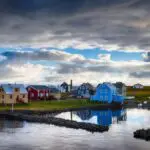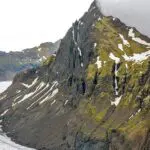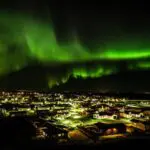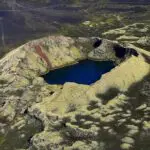In the following story, we will get to know a type of Icelandic ghost called Skotta (female) and Móri (male). They are “fylgjur” (follower), a type of ghost that latch onto a person, family or even a town.
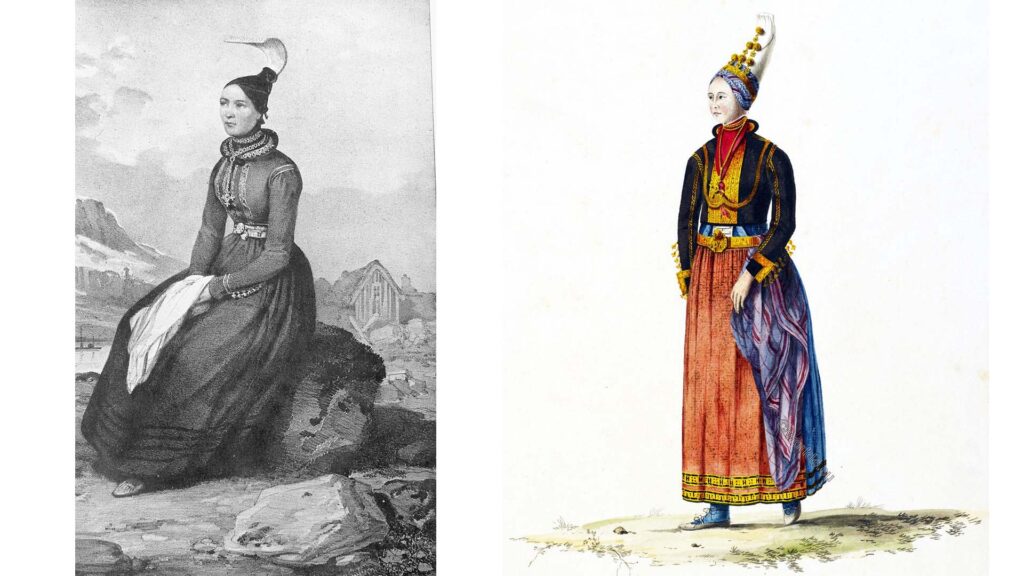
Skotta (tail) is named after their hat, which was like the old Icelandic headwear worn with faldbúningur. However, instead of having the headwear turn forward like was custom, the ghost had it on backwards and let it hang down its back, like a tail (skott). It was usually rust red in color, their socks red, and they sucked their fingers.
The male ghosts were called Móri (rust brown), after the color of their clothes. They wore rust brown jumpers or smocks, a large-brimmed hat with a low crown or a balaclava, but they put the whole head through the face opening and let it hang back onto their back. Some also had a goad.
Their names often took on a preface of the place where they were from, like the name of this story. Móhús was the farm’s name whose owner she hunted.
Read more about Icelandic ghosts, spectres and zombies here.
Please signup for our newsletter for more fun facts and information about Iceland.
Read other fairytales and legends:
- The Shepherd of Silfrúnarstaðir
- The Genesis of the Hidden People
- The Deacon of Myrká
- The Tale of Búkolla – Version 1 and 2
- White Cap
- Dear Mother in the Pen, Pen
- The Story of Mjaðveig Mánadóttir
- The Bishop and The Elves
- Katla’s Dream
- Now I should laugh if I were not dead!
- The Story of Bergþór of Bláfell
- The Two Sigurds
- The Sorcerers in the Westman Islands
- “The Darkness is Fun”
- The Merman
- The Manservant and the Water-Elves
- Gold Brow
- Úlfsvatn
- Sæmundur the Learned and the devil
Móhúsa-Skotta
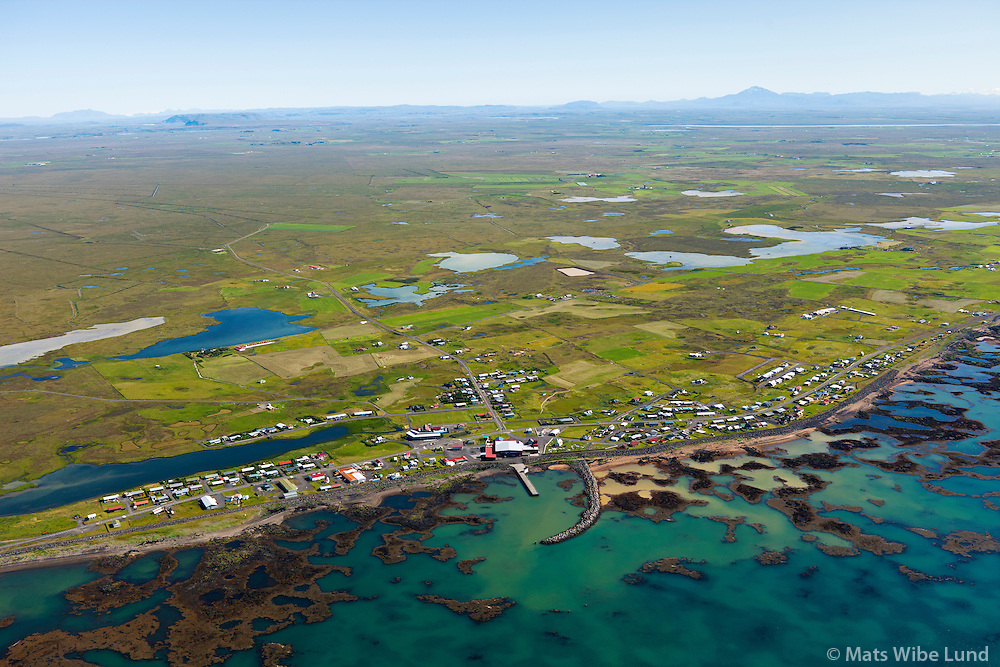
Western- Móhús is a cottage in Stokkseyri. Jón “the rich” Þórðarson lived there for a long time, and he was as famous in the South for his wealth. Jón began life very poor but grew incredibly rich with little money that people thought he had made a deal with the devil. Some of his lands he got for a very low price. Jón first lived in Refstokkur near Óseyrarnes (it is now deserted). A teenage girl came to him once and asked for a place to say, but he turned her away.
She died of exposure during the night and attached herself to Jón for a long time and played him nasty tricks. The ghost was called Skotta, and after Jón moved to Western-Móhús, she spoiled everything as much as possible. She killed his livestock and got so close to Jón that she gnawed apart the top of his socks one by one, as well as his shoes. She was so quick that if he put on new socks in the morning, they were in pieces by evening.
Jón usually had a short tie around his neck, and it was said that he did it so that Skotta would be less likely to strangle him, but she was constantly trying to.
Skotta was said to have made a man insane in broad daylight by Stokkseyri, and he was found strangled in a well nearby. However, the commotion didn’t really get bad until she met Sels-Móri.
When Skotta and Sels-Móri started working together, they killed a man named Tómas and lived in Norðurkot in Eyrarbakki. He had gone to Stokkseyri for Christmas to buy hangikjöt. He was dead the following day, dismembered, blue and bloody, just outside Stokkseyri, near where Móri had died of exposure shortly before.
After that, people saw three ghosts traveling together. They believed the third one was Tómas, who had now become their companion.
Then things got so bad that nobody could go out when it was almost dark, from Stokkseyri to Bakka or from Bakkan east without being attacked by these three companions.
Móhúsa-Jón calls for backup
Móhúsa-Jón felt the need to intervene in the game as far as Skotta was concerned, who was always considered the worst of the three. So that winter, he wrote the farmer Jón Magnússon at Þykkvabæjarklaustri Monastery, who was said to know more than he said. Móhúsa-Jón offered him thirty dollars to come from the farm to Eyrarbakki because he was starting to worry. When Jón came from the east, it is said that Móhúsa-Jón paid him half of the prize in advance. During that trip, it is believed that Monastery-Jón exorcised both Skotta and Tómas because they were never seen on Eyrarbakki after that.
Some people say that Jón took Skotta east with him, but she almost drowned him and all the crew members who were being transported across the Þjórsá River on the Sandhóla ferry. But Jón exorcised Skotta in Eyrarbakki.
But because Monastery-Jón did not exorcise Sels-Móri, Móhúsa-Jón did not want to pay him the remaining half of the salary. Monastery-Jón said that he had not found Sels-Móri anywhere. Móhúsa-Jón didn’t give him one shilling more, and they parted contentedly.
Please signup HERE for our newsletter for more fun facts and information about Iceland!

